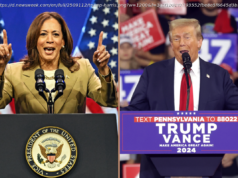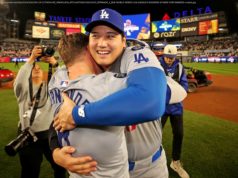e chaos in Charlottesville, Virginia, erupted around what is believed to be the largest group of white nationalists to come together in a decade.
The videos that rolled across the television screen were startling: Americans beating each other with clubs and sticks on the streets of a quiet college town. White supremacists with torches; anti-fascists pushing back. An improvised flame thrower fashioned from an aerosol can. Bottles of frozen water hurled like bricks at one another’s skulls.
Kevin Boyle, an American history professor at Northwestern University, watched it unfold, the feeling in his gut both horror and a sense that the racial tension bubbling for years had finally, almost inevitably, begun boiling over.
“Given our political moment, I’m not surprised that we’ve come to this point, ” he said. “I’m terribly depressed we’ve come to this point but I’m not surprised. It didn’t come out of nowhere.”
Historians and political scientists have been warning that American politics had become a pressure cooker, full of racial tension building once again to the point of a deadly clash, like the one in Charlottesville, Virginia, on Saturday that claimed three lives.
White supremacy has always lurked in America’s shadow, said Boyle, whose teaching focuses on the history of racial violence and civil rights. Then, he believes, President Donald Trump was elected and emboldened their hate.
“Donald Trump gave them permission to come out into the real world, ” he said. “As long as they were existing in this kind of sad little shadow world where they were just talking to each other, it was disturbing, but it’s not as profoundly dangerous as when they feel they can take the public square.”
Saturday’s chaos erupted around what is believed to be the largest group of white nationalists to come together in a decade — more than 1,000 neo-Nazis, skinheads and Ku Klux Klan members who descended on the city of Charlottesville to “take America back” by rallying against plans to remove a confederate statue. Hundreds came to protest against the racism. The two sides engaged in bloody brawls on the street. The day turned deadly when a car plowed into a crowd of peaceful anti-racism protesters, killing 32-year-old Heather Heyer. A Virginia State Police helicopter deployed in a large-scale response to the violence then crashed into the woods outside of town and both troopers on board died.
The violence had been building for months during a series of confrontations between members of the “alt-right” — a loose collection of white nationalists, racists and anti-immigration populists — and people who oppose them. It began the very day Trump put his hand on a Bible and took the oath of office. Skirmishes broke out at his inauguration between his supporters, some of them white nationalists, and those against him. More than 200 were arrested.
It was on that day that Richard Spencer, among the nation’s foremost white nationalists, realized that something had fundamentally shifted in American political discourse. He was giving a media interview when someone ran toward him and punched him in the head on video.
“We’re in a totally new world, ” he remembers thinking. “Political violence is a real thing.”
Days later, anti-fascists hurled smoke bombs, broke windows and ignited a massive bonfire at the University of California at Berkeley to protest a planned speech by right-wing provocateur Milo Yiannopoulos. Violent clashes have piled up since: 11 arrested after fights broke out at New York University when the founder of a right-wing men’s organization was scheduled to speak; clashes outside one of Spencer’s appearances at Auburn University; a shouting match between the two sides in Pikeville, Kentucky; confrontations in New Orleans when the city moved to remove a confederate monument; police opening fire with stun grenades and arresting more than a dozen during conflicts in Portland.
Spencer, and others who support white nationalism, blame the other side.
“With Trump’s election, the radical left of this county has come unhinged, ” said Kyle Bristow, the founder of a law firm dedicated to alt-right legal advocacy.
But both sides agree on the general narrative of how the widening racial and ideological divide took root: Some white Americans began feeling left behind by progress. The decline of the white working class coincided with drastic cultural changes, like quickly diversifying demographics and the election of the nation’s first black president.
“With the election of Barack Obama, there was so much talk about being this post-racial moment, and on some levels it was extraordinary, ” said Steven Hahn, a history professor at New York University. “But it didn’t take long for the really vicious racism to surface. It turned out to be an instigator of an enormous amount of rage, and I think Trump both fanned it and inherited it.”
Trump was long among the prominent members of the birther movement — those who questioned Obama’s citizenship and his legitimacy as president. His campaign was launched with racially-tinged rhetoric about the dangers of immigrants, which has continued into his presidency, said Hahn, who watched videos of Saturday’s clashes and saw in them reflections of the Ku Klux Klan movement of the 1920s.
Now white supremacist groups are actively trying to move into the mainstream. The Daily Stormer, a popular alt-right website, published a story in the run-up to the Charlottesville gathering, calling on followers to leave white hoods or Nazi costumes at home, and go for fitted shirts and suits instead, to attract recruits. They needed to look sexy, the author wrote.
Whether they might be successful in spreading their message depends a lot on how American leaders respond, said Boyle.
Trump quickly came under fire for his response. He said “we condemn in the strongest possible terms this egregious display of hatred, bigotry and violence on many sides, on many sides.”
The “on many sides” emphasized at the ending drew the ire of his critics, who pushed back on his statement as failing to specifically denounce racism and equating the white supremacists with those who came to protest their hate.
“The bottom line is if it weren’t for a bunch of neo-Nazis marching around it would have been a regular peaceful day in Charlottesville, ” said Kyle Kondik, with the University of Virginia’s Center for Politics.






